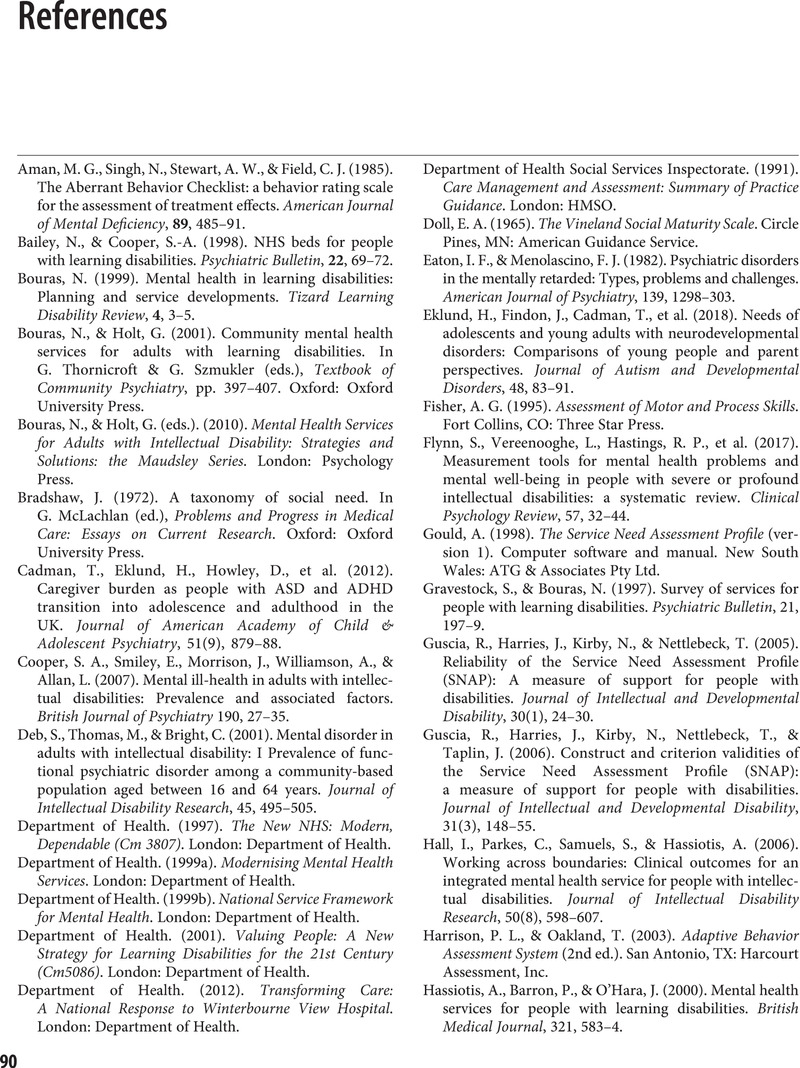Book contents
- Camberwell Assessment of Need for Adults with Developmental and Intellectual Disabilities
- Camberwell Assessment of Need for Adults with Developmental and Intellectual Disabilities
- Copyright page
- Contents
- Acknowledgements for the First Edition
- Acknowledgements for the Second Edition
- Abbreviations
- Chapter 1 Introduction
- Chapter 2 Needs Assessment in Intellectual Disabilities Mental Health Services
- Chapter 3 Development and Use of CANDID
- Chapter 4 Using CANDID-S
- Chapter 5 Using CANDID-R
- Chapter 6 Training for CANDID
- Chapter 7 Guidance on Rating
- Book part
- References
- Index
- References
References
Published online by Cambridge University Press: 15 February 2021
- Camberwell Assessment of Need for Adults with Developmental and Intellectual Disabilities
- Camberwell Assessment of Need for Adults with Developmental and Intellectual Disabilities
- Copyright page
- Contents
- Acknowledgements for the First Edition
- Acknowledgements for the Second Edition
- Abbreviations
- Chapter 1 Introduction
- Chapter 2 Needs Assessment in Intellectual Disabilities Mental Health Services
- Chapter 3 Development and Use of CANDID
- Chapter 4 Using CANDID-S
- Chapter 5 Using CANDID-R
- Chapter 6 Training for CANDID
- Chapter 7 Guidance on Rating
- Book part
- References
- Index
- References
Summary

- Type
- Chapter
- Information
- Camberwell Assessment of Need for Adults with Developmental and Intellectual DisabilitiesCANDID, pp. 90 - 92Publisher: Cambridge University PressPrint publication year: 2021



